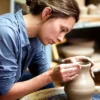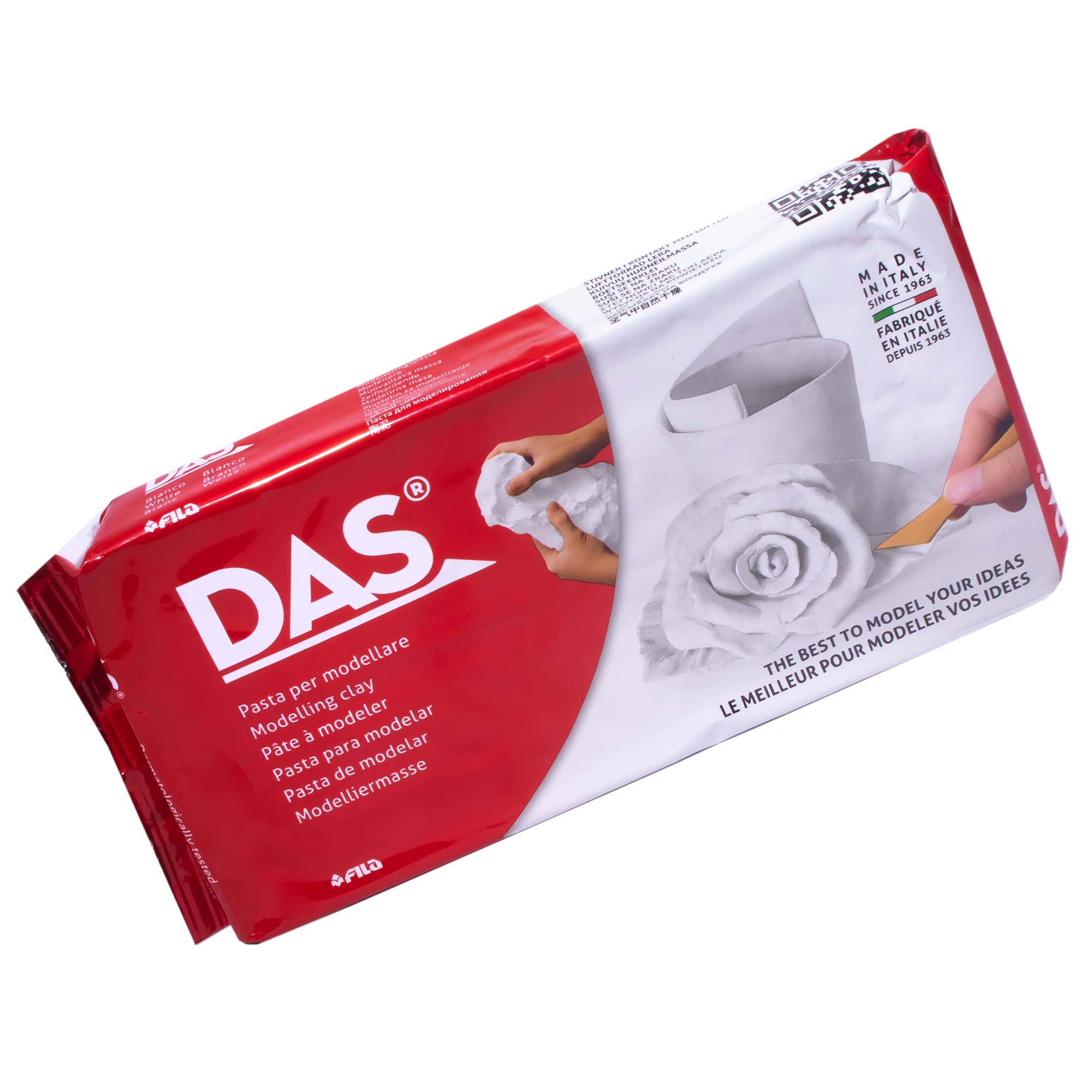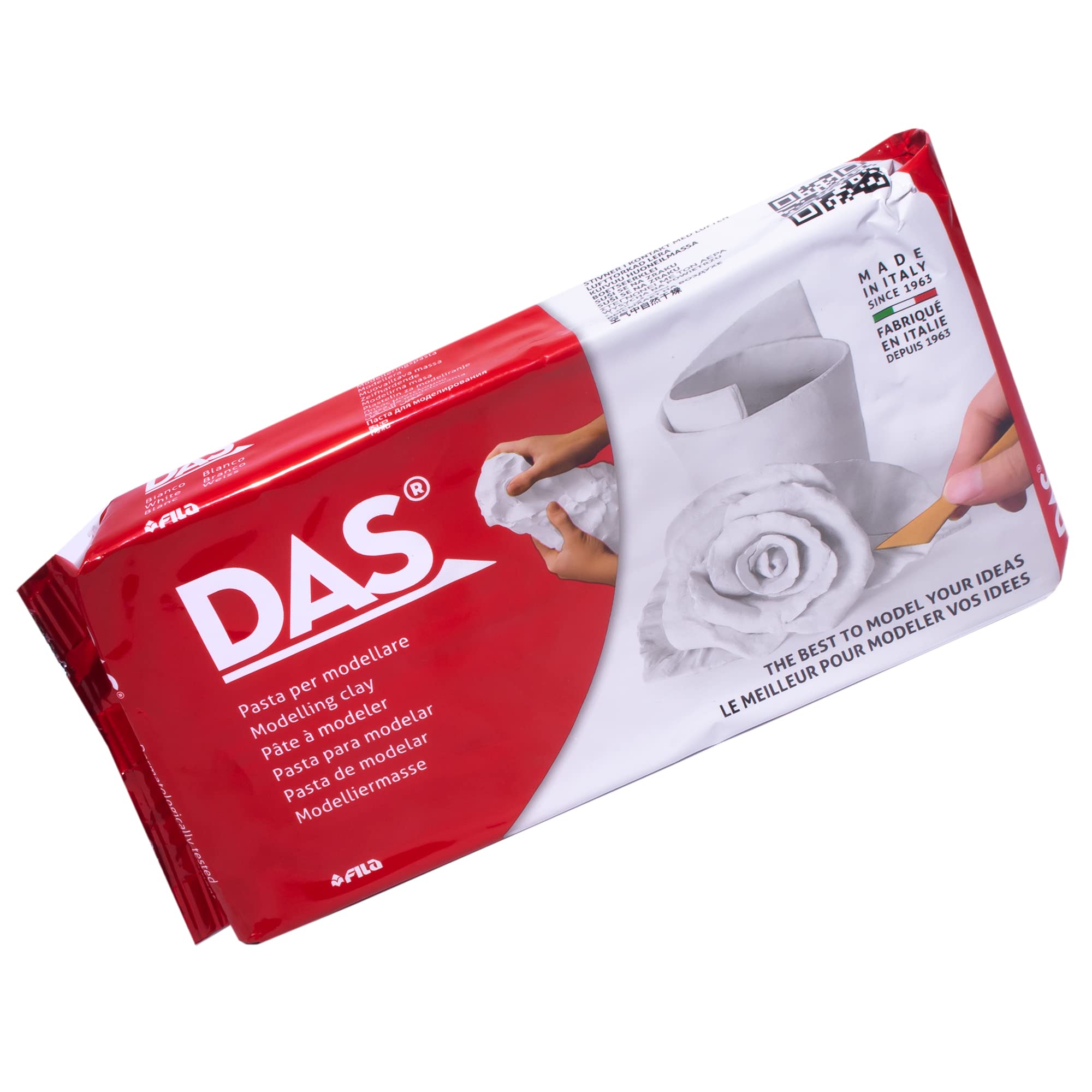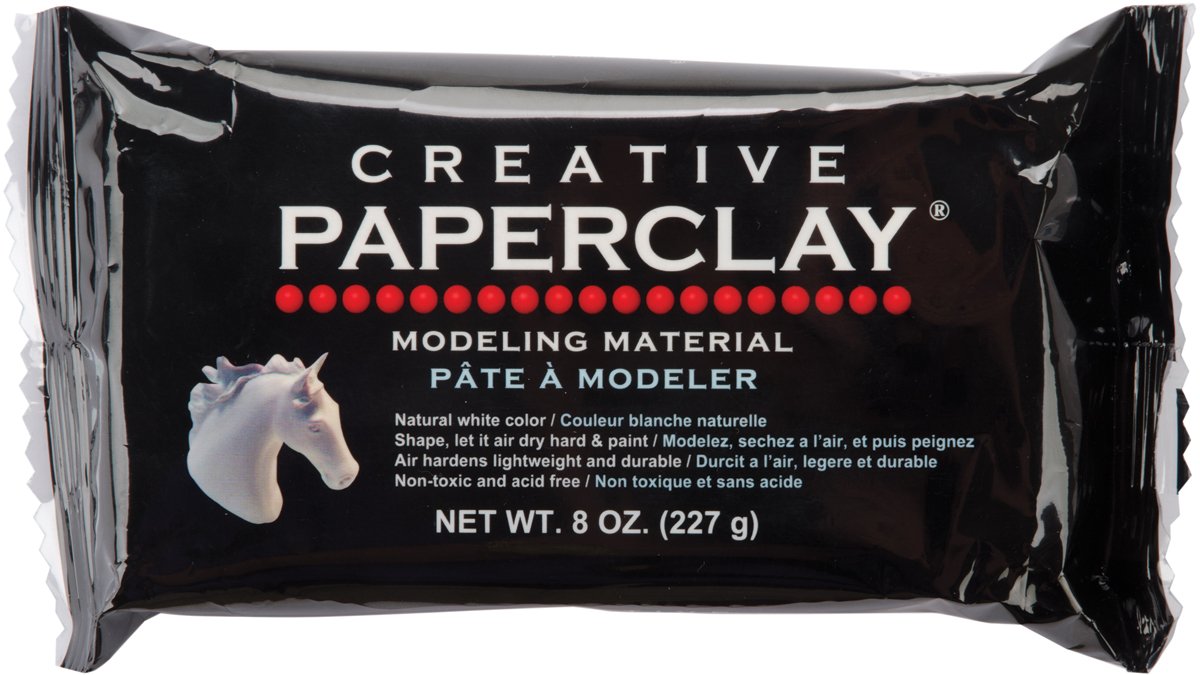Paper clay offers potters a unique blend of the flexibility of traditional clay and the additional benefits of paper fibers.
It is valued for its lightweight nature and impressive strength after firing.
Combining paper pulp with clay results in a medium that is less prone to cracking, even in intricate designs.
Because of these characteristics, many artists and hobbyists turn to paper clay for projects that demand detail and precision.
When selecting paper clay, several factors come into play.
The clay’s texture, the fiber content of the paper used, and the firing temperature requirements are key considerations.
It’s crucial to ensure that the clay is compatible with your kiln’s temperature range and aligns with the creative demands of your project.
The addition of paper also impacts drying times, reducing shrinkage during the firing process.
The market is filled with options, each tailored to different pottery needs.
Recognizing the critical attributes and variations in paper clay can make the selection process more straightforward.
We’ve researched and evaluated the best paper clays to guide you in making an informed choice for your pottery endeavors.
Best Paper Clay for Pottery
We’ve curated a list of the top paper clay options that stand out in quality and versatility.
These products offer excellent workability and strength, making them ideal for various pottery projects.
DAS Air Hardening Clay
A solid choice for those who aspire to create without firing, DAS Air Hardening Clay is practical for various artistic projects due to its ease of use and versatile nature.
- Smooth and easy to mold
- Air dries, no kiln needed
- Available in different quantities
- Can crack if not managed well
- Requires careful storage
- Limited to light use in sculptures
DAS Air Hardening Clay stands out with its smooth texture, which makes molding an enjoyable process.
We appreciate how the clay dries by air without needing any baking, offering a simple and fuss-free crafting experience.
It’s available in both white and terra cotta, which gives us more options to play with different shades for our projects.
On the flip side, this clay needs careful handling to avoid cracking once it dries completely.
We have found that managing moisture levels as you work can help, but it’s something to be mindful of.
Keeping it in a sealed container between uses is essential to maintain its malleability over time.
While DAS Air Hardening Clay is very user-friendly, we suggest using it for light sculptures or pieces that won’t endure a lot of stress.
Even with its easy application, it may not be the most robust option out there, but it is perfect for hobbyists and small decorative items.
Its Italian heritage assures a quality touch that artists can rely on.
ACTIVA Supreme Clay
This product is a superb choice for artists seeking a versatile and dependable paper clay for detailed projects.
- Excellent plasticity and detail retention
- Non-toxic and safe for all users
- Minimal shrinkage and superior durability upon drying
- Dries quickly, requiring prompt use
- Can be prone to cracking when used in thin layers
- Not truly white in color
ACTIVA Supreme Clay impressed us with its professional-grade quality and ease of use.
From the moment the clay touched our hands, we noticed its fine texture and malleability.
The ability to achieve detailed work was consistent, whether we shaped it with tools or simply our hands.
Throughout various projects, this clay consistently lived up to its promise of superior plasticity, making it an excellent option for artists who demand precision.
We especially appreciated its air-drying feature, which allowed us to work without the need for a kiln.
The clay dries to a strong and durable finish that can be carved, sanded, or even drilled.
For those more experienced, kiln drying is still an option.
It held up better than expected, though ensuring an even thickness is crucial to avoid cracking, especially with finer, more delicate pieces.
Though its quick drying feature is ideal for time-sensitive projects, it also requires a bit of rush in execution.
This may take getting used to for beginners.
We found the best results when working in thicker sections and keeping our hands damp.
All in all, this clay truly delivers for both the classroom and professional studio settings.
ReArt Air-Dry Clay Set
This clay set is a versatile choice for hobbyists and professionals looking for an all-in-one package to dive into pottery and modeling projects.
- Large 10LBs package provides ample material for various projects.
- Accompanied by 40 high-quality tools catering to diverse sculpting needs.
- Non-toxic, making it safe for home use.
- Clay may dry inconsistently, requiring attention to detail.
- Can feel slightly crumbly if not sealed properly.
- Initial use may require a learning curve for those new to the medium.
Working with the ReArt Air-Dry Clay Set has been a rewarding endeavor for us.
The clay, made from natural kaolin, is satisfying to mold and sculpt, and the tactile experience it offers is delightful.
When paired with the extensive toolset, it truly opens up endless possibilities for creativity.
The sheer size of the package allows us to work on larger projects or multiple smaller ones concurrently.
It’s perfect for those marathon creative sessions, ensuring we never run out of clay in the middle of a project.
Despite its benefits, patience is required, as the air-dry process can take a little longer, depending on the thickness of the piece.
Although it can be challenging initially to manage the drying process, we’ve found that using a bit of water helps keep the surface supple.
Overall, this clay set offers both quality and quantity, making it a reliable companion for anyone passionate about pottery and sculpting.
Creative Paperclay
This versatile air-drying clay is perfect for both beginners and experienced artists seeking a clean, easy-to-use sculpting medium without the need for a kiln.
- No baking required
- Adheres well to various surfaces
- Smooth finish when dry
- Longer drying time
- May curl slightly
- Not suitable for wet areas
Working with Creative Paperclay feels like an absolute delight.
Its smooth texture and malleability make it straightforward to shape, and it’s a pleasure to see the fine details it can capture.
With no kiln needed, we can simply let it air dry while working on other projects.
This convenience makes it a favorite in our art studio.
One point to consider is its drying time, which can be a bit lengthy, taking around three days for complete hardness.
During the drying stage, we’ve noticed slight curling, particularly with thinner pieces.
It’s manageable with some experimentation, but something to keep in mind for intricate projects.
Everyone appreciates how well this clay bonds to a wide range of surfaces like wood or canvas.
Its clean, odorless nature adds to the overall user-friendly experience, making it a go-to for many creative endeavors.
The seamless finish, especially when sanded, allows us to paint or decorate with ease, transforming our ideas into reality effortlessly.
SIO-2 Cellulain Paper Porcelain Clay
This premium-quality, versatile clay is an excellent choice for crafting intricate porcelain pieces.
- Excellent stability during firing, reducing the risk of deformation.
- Paper fibers incorporated to minimize cracks in finished pieces.
- Suitable for both hand-building and wheel throwing.
- Requires careful handling to maintain the texture.
- High firing temperatures may be challenging for beginners.
- Limited availability in some regions.
Working with the SIO-2 Cellulain Paper Porcelain Clay was a smooth and rewarding experience for us.
Its malleability is impressive, and it allowed us to craft detailed figures effortlessly.
A notable advantage is that the paper fibers help reduce the risk of cracks during firing, which is reassuring for both novices and veteran potters.
Its versatility shines through as it performs well in both hand-building and on the wheel.
We appreciate the unique texture it achieves once fired, making it an elegant option for those who prefer unglazed finishes.
Every piece embodied a porcelain elegance that feels almost ethereal.
While there are challenges, such as maintaining the texture when handling and mastering the high firing temperatures, the results speak for themselves.
This clay, made in Spain by Ceramica Collet S.A. since 1874, truly stands out in craftsmanship and quality.
Buying Guide
When selecting the best paper clay for pottery, our primary focus should be on key characteristics like texture, plasticity, and drying time.
Understanding these aspects ensures we choose a clay that suits our pottery style and needs.
We’ll explore these features and how they affect the overall crafting experience.
Texture
Texture is critical.
It determines the clay’s feel and how smoothly we can work with it.
We should look for a smooth, consistent texture that allows for intricate designs without roughness.
A well-blended paper clay prevents unwanted lumps and enhances our crafting experience.
Plasticity
Plasticity refers to how flexible and moldable the clay is.
High plasticity enables us to shape the clay without it cracking or breaking.
For detailed or complex sculptures, it’s essential that the clay we select remains pliable through various shaping and adjustment stages.
Drying Time
We must pay attention to drying time.
Faster drying clays can save time but require quick work.
Conversely, slower drying options provide more room for adjustments and refinements.
Choosing the drying speed that aligns with our working pace helps prevent frustrations and improves outcomes.
Additional Features
Sometimes, paper clay includes other additives for strength or color.
It’s vital to read product descriptions carefully to ensure any additional features meet our specific requirements.
We also consider whether the clay requires kiln firing or air drying, depending on our facilities and preferences.
Price and Quantity Considerations
Comparing price and quantity helps us find the best value.
While some products offer more clay at a lower cost, we should assess if it meets our quality expectations.
A balance between cost-effectiveness and high performance ensures satisfaction in the long term.
Frequently Asked Questions
In our exploration of paper clay’s attributes, we find critical considerations for beginners and veterans alike, with a focus on durability, brand differences, kiln compatibility, and common challenges.
What characteristics make paper clay ideal for beginner potters?
Paper clay offers excellent plasticity, allowing easy manipulation and correction.
Its lightweight nature makes handling convenient, particularly for those new to pottery.
Enhanced bonding properties reduce breakage risk, supporting skill development.
How does air-dry paper clay compare to traditional clay in terms of durability?
Air-dry paper clay lacks the strength of kiln-fired clay, but it suits projects needing less durability.
It’s less prone to cracking than traditional air-dry clay, providing a dependable alternative for non-functional items.
What are the key differences between popular brands of paper clay?
Each brand varies in fiber content, resulting in differences in workability and strength.
Some brands might offer smoother textures, while others emphasize stiffness.
Pricing also varies, reflecting quality and usability for diverse pottery goals.
Can all paper clays be used for pottery projects that require kiln firing?
Not all paper clays are designed for kiln firing.
Some contain ingredients unsuitable for high-temperature environments.
It’s essential to check packaging labels to ensure compatibility, especially when planning for durable, functional pieces.
What are some common issues associated with using paper clay and how can they be mitigated?
Cracking during drying occurs if moisture isn’t managed properly.
To avoid this, we should monitor drying times and evenly distribute thickness.
Poor adhesion in complex designs can be improved with slip or by scoring surfaces before joining.
How does paper clay’s workability and texture vary among top-rated products?
Different production techniques lead to unique textures.
These textures can range from fine and smooth to coarse and fibrous.
These variations impact ease of use.
Some clays allow easy detail work, while others provide sturdiness favored in structural projects.







